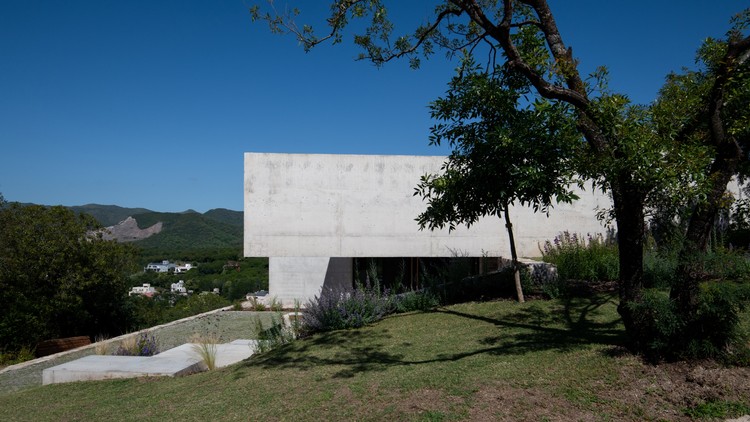Social Housing In Ceuta IND [Inter.National.Design]
2013-09-10 00:00
架构师提供的文本描述。西班牙住房部组织的先锋社会住房国际竞赛(VIVA)高度重视新建筑与城市环境的关系,其口号是“我们创造城市”。针对处境不利的公民,正如大多数社会住房项目所预期的那样,它的预算很紧张。我们决定通过充分利用网站的复杂性来解决预算紧张的问题。休达位于非洲大陆的西北部,然而它是一个欧洲飞地,如果你放大到休达内的竞争场地,你会发现摩洛哥的边界在1公里之内。从这个意义上说,它位于欧洲和非洲的边境地区,但一旦你在这个地方,你就不会觉得自己身处西班牙城市,也不觉得自己身处摩洛哥,它充其量不过是一种混合景观,在某种程度上,它在这方面是独一无二的。在100米范围内,这个遗址可能面临着欧洲最大的非正式定居点-巴里亚达普林西比阿方索(Barriada普林西比Alfonso),这个定居点的特征是数百座自建的建筑,大多居住在阿拉伯移民的聚居地上,其特点是规模小、体积大、有立方体、迷宫般的街道模式,以及公共空间稀缺时密集使用私人露台。一旦你进入现场,从附近清真寺发出的祈祷声让你意识到,这不是你的经典周边社会住宅情节。这是一个紧张而美丽的融合文化和环境的地方,或者在未经训练的眼中,是两种城市建设方式之间相当残酷的战场。最后,竞争网站也发挥了一个不寻常的特点,社会住房,对地中海的看法很好。竞争要求在预算范围内制定一个明确可行的方案,并将其类型限制在大多数社会住房计划中预期的开放块(楼板)上。对于这种特殊情况,这是正确的答案吗?
Text description provided by the architects. The international competition on Vanguard Social Housing (VIVA) organized by the Spanish Ministry of Housing placed a high emphasis on the relationship of the new architecture with the urban environment under the slogan 'We Make City'. Addressed to disadvantaged citizens and -as expected in most social housing projects- it had a tight budget. We decided to confront the tightness of the budget by taking advantage of the richness of the site complexity. Ceuta is in the north-western tip of the African continent and yet it is a European enclave, if you zoom in into the competition site within Ceuta you find the border of Morocco within 1km. The site in that sense at in the frontier of Europe and Africa, yet once you are in the site you don’t feel you are in a Spanish city, nor in a Moroccan, it is at best a hybrid landscape and to an extent it feels unique in this regard. Within 100 meters the site faces perhaps the biggest informal settlement of Europe called Barriada Principe Alfonso, a settlement characterized by hundreds of self built structures mostly inhabited by Arab immigrants characterized by their small scale, massiveness, cubic forms, labyrinth street patterns and intensive use of private terraces as public spaces are scarce. Once you are in the site the sounds of the call for prayer from nearby mosques makes you realize this is not your classical peripheral social housing plot. It is an intense and beautiful merging ground of cultures and environments, or perhaps to an untrained eye a rather brutal battleground between two ways of making a city. Finally the competition site also plays an unusual feature for social housing, with great views to the Mediterranean Sea. The competition asked for a clearly feasible scheme within the budget and restricted its typology to open block (slabs) as expected in most social housing schemes. Was this the right answer for this specific condition?
由于竞赛的第一阶段要求制定950套单元的城市规划,我们把精力从设计转向系统或模式,继续推进克里斯托弗·亚历山大在1969年利马PREVI项目中对空间系统的探索。但是我们把我们的模式限制在建筑和空间元素上。这一名为“Vivienda de Patron”的设计旨在为一种建筑类型找到一个答案,这种建筑可能是欧洲城市主义与周边阿拉伯非正式聚居地之间的一种联系,这种模式将两种建造方式的空间系统结合起来并融合在一起。因此,它既是一个迷宫,也是一个网格,它有一个小规模的单位,但它也结合了一个超大的基础设施,如停车和储存,它使用私人和普通的平台开放广场,亲密的街道和城市街角商店。目标是建立足够慷慨的建筑,无论其社会或经济背景如何,对任何公民都有吸引力和舒适感。大多数公寓都有角落起居室,在街区之间都有很长的视野,很少用于社会住房的材料,如大理石地板,以及其他实际好处,如有盖的停车场和所有单元的储存。
Since the competition first phase asked for an urban plan for 950 units we focus our efforts away from design and more towards a system or a pattern, in a way continuing the explorations of spatial systems initiated by Christopher Alexander in the PREVI project of Lima from 1969. But we restricted our patterns to architecture and spatial elements only. The design called ‘Vivienda de Patron’ seeks to find an answer for a type of architecture that could be a link between the European urbanism and the Arab informal settlement in the surroundings, a pattern that combines and merges the spatial systems of both ways of making. Therefore it is both a labyrinth and a grid, it has a small scale in its units but it is also combined with a mega plinth for infrastructure such as parking and storage, it uses intimate terraces for private and common use with open squares, intimate streets and urban corner shops. The target is to build architecture generous enough to be attractive and comfortable for ANY citizen regardless of its social or economic background. Most of the apartments have corner living rooms, all have long views between blocks, materials seldom used for social housing such as marble flooring, and other practical benefits such as covered parking places and storage for all units.
你会住在那里?在比赛中,我们多次放弃那些看起来很有吸引力的计划,因为我们无法回答这样一个问题:你会住在那里吗?因此,模式房屋也是一个双关语,或者是一个内部笑话,我们设计的不是为穷人设计住房,而是设计一个赞助人想要居住的居住空间。
And you would live there? Many times during the competition we discarded schemes that look formally attractive because we could not answer with a yes to the question: would you live there? Therefore Pattern Housing is also a pun, or an inside joke where instead of designing housing for the poor, we design a living space where the PATRON would like to live.
 举报
举报
别默默的看了,快登录帮我评论一下吧!:)
注册
登录
更多评论
相关文章
-

描边风设计中,最容易犯的8种问题分析
2018年走过了四分之一,LOGO设计趋势也清晰了LOGO设计
-

描边风设计中,最容易犯的8种问题分析
2018年走过了四分之一,LOGO设计趋势也清晰了LOGO设计
-

描边风设计中,最容易犯的8种问题分析
2018年走过了四分之一,LOGO设计趋势也清晰了LOGO设计


























.jpg)



























